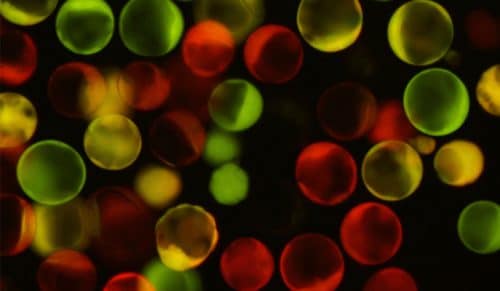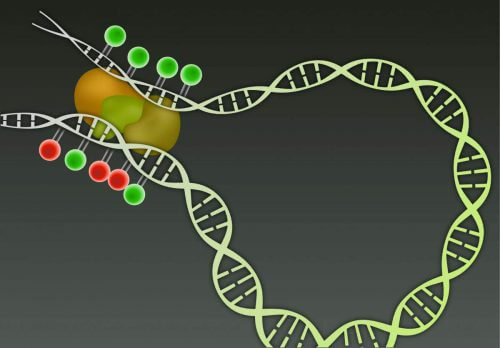Dr. Yonatan Shtelzer from the Weizmann Institute developed an innovative method that allows an unprecedented observation of the development of cells in the embryo

It's one of life's great mysteries: a tiny ball of cells is absorbed in the womb, and somehow, miraculously, the identical cells begin to differentiate, each one headed toward a different destiny. How from the same "list of ingredients" was created a variety of hundreds of cell types that together make up the living being? The scientists of the Weizmann Institute of Science and their research partners recently came another step closer to solving the mystery by developing a method that allows an unprecedented observation of the differentiation of embryonic stem cells, and discovered that the apparently identical cells begin to change earlier than previously thought. The results of the study were published in the scientific journal Molecular Cell.
Every cell in our body contains the same genome, but epigenetics (literally: above genetics) - that is, changes that do not involve a change in the DNA sequence itself, but regulate the cell's activity - varies from cell to cell. "Epigenetic changes have a particularly decisive effect on embryonic development, since during it it is necessary to turn on and turn off many genes alternately," explains Dr. Yonatan Shetelzer, from the Department of Molecular Biology of the Cell. In his post-doctoral research, in the laboratory of Prof. Rudolph Janisch from the Massachusetts Institute of Technology (MIT), Dr. Shetelzer developed, through a combination of several advanced techniques, a new method for monitoring epigenetic activity in real time at the single cell level. "For years we have had 'reporter' genes - DNA sequences that code for luminescent proteins - that allow us to monitor gene expression in the cell," he says, "but until now, we didn't have similar tools for studying epigenetic changes. With the new method, we actually get a 'reporter' that can be inserted into the genome in order to reveal its epigenetics, and thus see these changes - even the smallest ones - at the single cell level."
In a study conducted at MIT and the Weizmann Institute of Science, Dr. Shetelzer, Prof. Yeyanish and research student Yuelin Song, from Yeyanish's laboratory, investigated the most common epigenetic change in DNA: the addition of a chemical tag of a methyl group, known as methylation. When the blastocyst, that tiny ball containing only about 100 cells, is absorbed into the uterus, its genome undergoes drastic methylation. Methylation is mainly used as a means of silencing genes, but in certain regions on the surface of the DNA, it seems that methylation is used less as an off switch and more as a "glass" that controls the level of expression of certain genes. Studies have shown that many of these regions act as "control regions" - DNA segments that remotely influence other genes - and that these control regions are designated for genes of certain types of cells or tissues.
We were surprised to discover that even when the blastocyst is just beginning to be absorbed by the uterus - a stage in which we assumed that the embryonic stem cells have their full potential - some of the possibilities of the cells are already beginning to be blocked."

To decipher the mechanism of action of these control regions at the beginning of embryonic development, the researchers inserted the newly developed reporters into two different control sites in the mouse blastocyst and observed the methylation process. They were surprised to discover that the methyl tags that were attached to the DNA were removed a short time later by proteins, and later returned and attached to it. The genetic reporting system allowed the researchers to observe in detail the effects of these changes in the control regions, and they discovered that removing the tags promoted spatial interactions between the control regions and the "controlled" genes.
Each DNA gene has two copies - one copy from each parent. The researchers discovered that the interactions between the methyl tags and each of the two copies of the gene are not synchronized, and the result of this seemingly random activity is a different level of expression from cell to cell: in some, one copy was silenced, in others both were silenced, and sometimes none of them. The researchers hypothesize that the unique epigenetic state of these control regions - leading to further differences in the expression of the controlled genes - designates the cell to a certain fate already at this initial stage, when all cells still look the same.
"The whole process of methylation and demethylation at the control site, and the differentiation that followed, turned out to be extremely complex. Now we can begin to piece together the small details of the decision processes in the cell during the first days and weeks of embryonic development in order to understand how the potential of an embryonic stem cell - one that can differentiate into any type of cell - is ultimately reduced to a specific fate," says Dr. Stelzer. "We were surprised to discover that even when the blastocyst is just beginning to be absorbed by the uterus - a stage in which we assumed that the embryonic stem cells have their full potential - some of the possibilities of the cells are already beginning to be blocked."
More of the topic in Hayadan:

One response
Well, I read everything and didn't understand anything